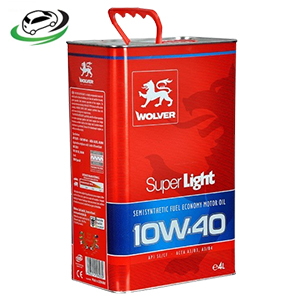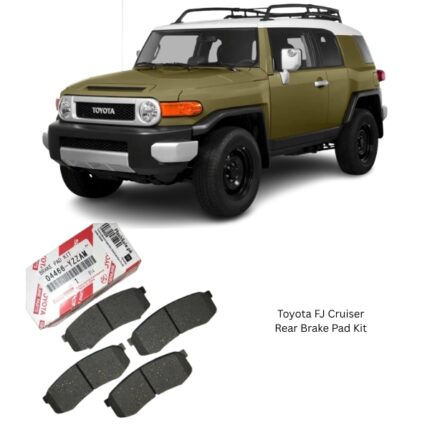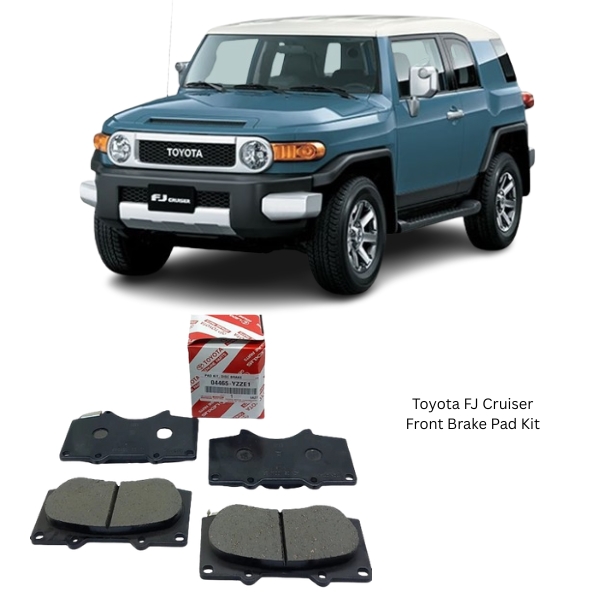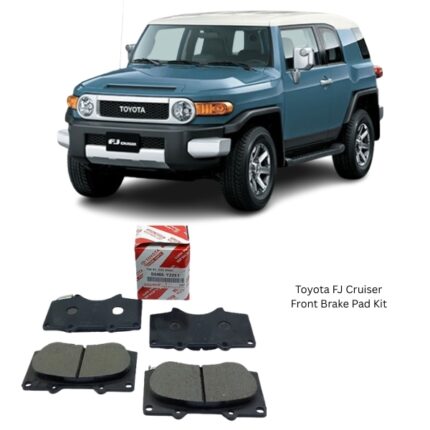Get Toyota FJ Cruiser Front Brake Pad Kit 04465-YZZE1 in Kenya
The Front Brake Pad Kit is a crucial component of a vehicle’s braking system, specifically designed to provide effective friction against the brake rotors to slow down or stop the vehicle. As the primary point of contact in disc brake systems, front brake pads play a vital role in ensuring safety, braking efficiency, and driver confidence in all driving conditions.
1. Purpose and Function
In a disc brake system, brake pads work in conjunction with brake rotors (or discs) to convert kinetic energy into heat energy through friction. When the brake pedal is pressed, hydraulic pressure forces the caliper pistons to clamp the pads onto the spinning rotors, creating the necessary friction to slow the wheel.
Front brake pads generally endure more wear than rear pads because a vehicle’s braking force is biased towards the front wheels — often 60–70% — due to weight transfer during braking. This makes the quality and condition of the front brake pad kit essential for both performance and safety.
2. Components of a Front Brake Pad Kit
A typical kit includes:
-
Brake Pads (2 or 4 pieces): The friction material bonded to a backing plate, designed to press against the brake rotor.
-
Shims: Thin layers of noise-dampening material attached to the pad backing to reduce vibration and brake squeal.
-
Wear Indicators: Either mechanical clips or electronic sensors that alert the driver when pads need replacement.
-
Fitting Hardware (if included): Clips, pins, and springs to secure the pads in the caliper and ensure proper alignment.
3. Construction and Materials
High-quality front brake pads are built to withstand extreme pressure, heat, and friction. Common materials include:
a) Semi-Metallic Pads
-
Composition: 30–65% metal content (steel, iron, copper) mixed with friction modifiers and fillers.
-
Benefits: Excellent heat dissipation, strong braking power, good durability.
-
Drawbacks: Can be noisier and produce more brake dust.
b) Ceramic Pads
-
Composition: Ceramic fibers, bonding agents, small amounts of metal.
-
Benefits: Quieter operation, less brake dust, stable performance over a wide temperature range.
-
Drawbacks: Generally more expensive than other types.
c) Organic (NAO) Pads
-
Composition: Non-asbestos organic fibers, resins, and fillers.
-
Benefits: Smooth, quiet braking with gentle rotor wear.
-
Drawbacks: Shorter lifespan and less effective in extreme heat.
4. Performance Characteristics
A front brake pad kit must balance multiple performance factors:
-
Friction Coefficient: Determines braking power. High-quality pads maintain consistent friction in various temperatures and driving conditions.
-
Fade Resistance: Ability to perform under repeated hard braking without losing efficiency.
-
Noise and Vibration Control: Shims, chamfered edges, and slot designs reduce squealing and juddering.
-
Heat Dissipation: Prevents overheating and prolongs both pad and rotor life.
-
Wear Resistance: Durable materials and designs extend service intervals.
5. Importance of Proper Fitment
Front brake pads are engineered to match specific caliper and rotor designs. Correct fitment ensures:
-
Maximum contact area with the rotor for efficient braking.
-
Even wear across the pad surface.
-
Prevention of caliper binding or rotor scoring.
-
Proper operation of wear indicators.
6. Service Life and Replacement Intervals
The lifespan of front brake pads varies depending on driving style, vehicle weight, and conditions:
-
Urban driving: Frequent stops can wear pads in 20,000–30,000 km.
-
Highway driving: Less frequent braking can extend life to 50,000 km or more.
-
Heavy loads or performance use: Accelerated wear due to higher heat and friction.
7. Signs of Worn Brake Pads
It’s important to replace front brake pads before they wear down completely to avoid rotor damage and compromised safety. Warning signs include:
-
Squealing or screeching noise during braking.
-
Grinding sound indicating contact between backing plate and rotor.
-
Increased stopping distance.
-
Brake pedal vibration or pulsation.
-
Illuminated brake wear warning light (if equipped).
8. Installation and Maintenance
Replacing a front brake pad kit requires mechanical skill and proper tools. Key steps include:
-
Lift and Secure the Vehicle: Ensure safety with jack stands.
-
Remove the Wheel: Gain access to the brake caliper.
-
Remove Caliper and Old Pads: Carefully detach and inspect components.
-
Inspect Rotors: Check for scoring, cracks, or warping; replace or resurface if needed.
-
Install New Pads and Hardware: Follow manufacturer torque specifications.
-
Reassemble and Test: Pump the brake pedal before driving to seat the pads against the rotors.
9. Break-In (Bedding) Procedure
New brake pads require proper bedding to achieve optimal performance and longevity:
-
Perform a series of gradual stops from moderate speed to heat the pads evenly.
-
Avoid hard braking for the first 300–500 km to prevent uneven pad material transfer to the rotor.
-
Allow cooling between stops to prevent glazing.
10. Safety Considerations
-
Always replace pads in pairs (both front wheels) to maintain balanced braking.
-
Check brake fluid levels after pad replacement.
-
Use the correct type of pads for the intended driving conditions.
-
Ensure calipers and sliders are clean and lubricated for smooth movement.
11. Advantages of a Quality Front Brake Pad Kit
-
Consistent Stopping Power: Reliable performance in daily driving and emergency situations.
-
Enhanced Safety: Shorter stopping distances and better control.
-
Reduced Noise: Engineering designs that minimize squeal and vibration.
-
Longer Rotor Life: Properly matched friction materials prevent excessive rotor wear.
-
Cost-Effectiveness: Durable pads reduce the frequency of replacements.
12. Environmental and Operational Factors
Brake performance and pad wear are influenced by:
-
Climate: Cold weather can reduce initial bite; hot climates increase fade risk.
-
Terrain: Mountain driving puts more strain on brakes.
-
Driving Habits: Aggressive braking accelerates wear.
-
Load: Heavier vehicles require more braking force, increasing pad stress.
13. Quality Standards and Testing
Premium front brake pad kits are tested to meet or exceed industry standards such as:
-
ECE R90 Certification: Ensures performance close to original equipment.
-
SAE J2784 Testing: Measures brake effectiveness.
-
Fade and Recovery Testing: Evaluates resistance to performance loss after repeated stops.
-
Noise, Vibration, Harshness (NVH) Testing: Ensures a smooth, quiet braking experience.
Follow us on Facebook for more parts.




